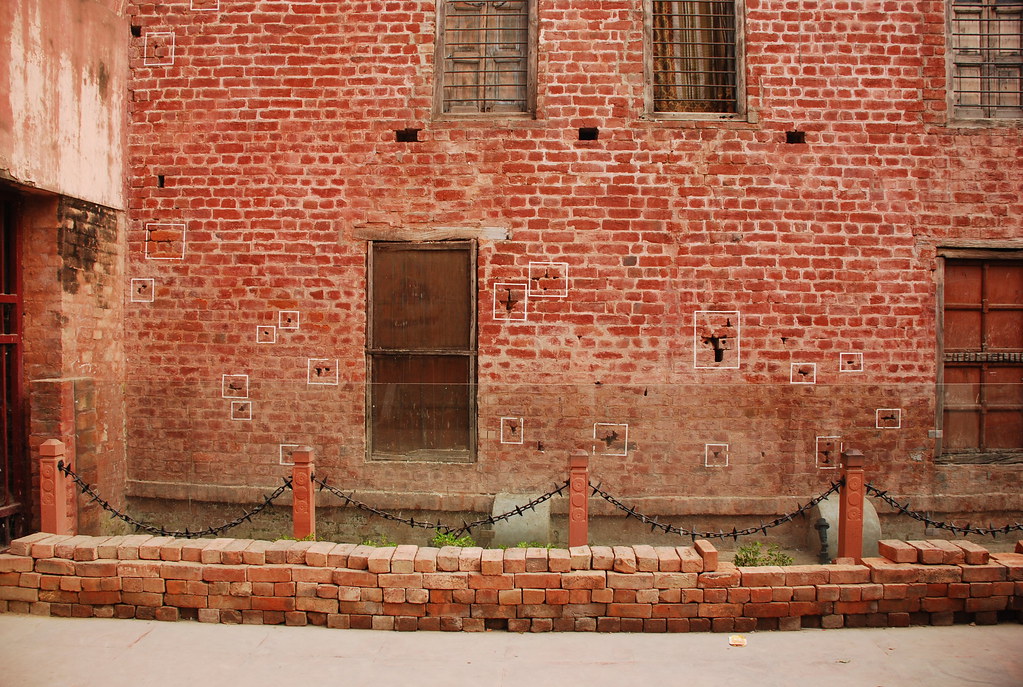While growing up in Amritsar, I would always find myself surrounded by shadows of the past: religious, colonial, and cultural.
When I came of age, I began connecting this past with the present, only to find it more relevant than I could’ve ever thought.
Six months ago, during Dussehra, a train accident in Amritsar took more than 60 lives. After the tragedy, what followed was a close scrutiny of the inaction of the state government – the Congress – in preventing the tragedy and how it was to be held accountable.
While fingers were being pointed, opposition parties like the Shiv Sena and BJP leaders from Punjab compared the train accident with the 1919 Jallianwala Bagh massacre.
The comparison harkens back to a past when Indians were incessantly being targeted by the British.
On April 13, 1919, General Reginald Dyer tried to crush this unity by shutting all possible outlets out of the Bagh, killing thousands of Sikhs who had assembled for a peaceful protest against the deportation of two national leaders – Satya Pal and Saifuddin Kitchlew.
While Dyer became an emblem of what the British stood for – dependency, colonialism, and tyranny, the Bagh, after the tragedy, became a permanent source of lament in Amritsar.
Today, opposition parties are harnessing this lament to suit their political motives.
The Shiv Sena and BJP, by comparing the train accident with the massacre, are suggesting that the people were victimised 100 years later too.
When we remember the massacre in this light, we make it a trope to nurture sentiments that people readily attach to such events.
These sentiments aren’t new; they have been handed down by a stealthily endorsed narrative of history. The massacre, 100 years ago, was a tragedy that killed thousands. It was an act of injustice, consciously carried out with the intention of showing the colonised their place.
But that’s not what the place reflects.
When you go there, you won’t be able to feel what it stands for – at least not with the way it’s presented today.
People visit the Bagh, click pictures, see the bullet marks, the martyr’s well, and mark the itinerary.
They sit there; it almost looks like a picnic garden.
The small gallery there offers little information, and that too, in a deteriorated condition.
Clearly, inadequate efforts have gone into educating people about the incident.
But when the need arises to use it for political gimmicks, it is conveniently remembered.
For instance, in October 2018, the central government appointed former chief minister of Punjab, Prakash Singh Badal, as a trustee of Jallianwala Bagh National Memorial Trust, a little ahead of the massacre’s centenary.
It’s true that during the Dussehra celebrations, there was scope for more preventive measures beforehand.
At the same time, attempts at remuneration that followed won’t be able to compensate for those who died in the accident.
But to liken it to Jallianwala Bagh massacre, where intention played the biggest role, is to place undeserved blame.
A hundred years later, a watershed event from our colonial history is being watered down in front of our eyes.
Sadly, Jallianwala Bagh is only to suit our touristy feet, to satiate politically hungry stomachs, and even to attempt to rouse our nationalistic fervour which is on an all time high today.
The need is to understand how narratives build around us.
Politics is all about using history to suit itself more than ever.
Be it bigger issues like Babri Masjid-Ram Mandir or a node like the Bagh to call out to you, it’s more present today than we realise.
Jallianwala Bagh’s meaning in itself cannot be discounted, but it remains a highly neglected part of our shared history.
It is on us to remember the root, to understand the magnitude of what an event was against what they’ll repeatedly suggest.
We must define ourselves, our identity, our thoughts, and our opinions wisely.
Anureet Kaur is a literature graduate from the University of Delhi. Born and brought up in Amritsar, she is a writer and editor based in Gurgaon.
Featured image credit: Flickr

